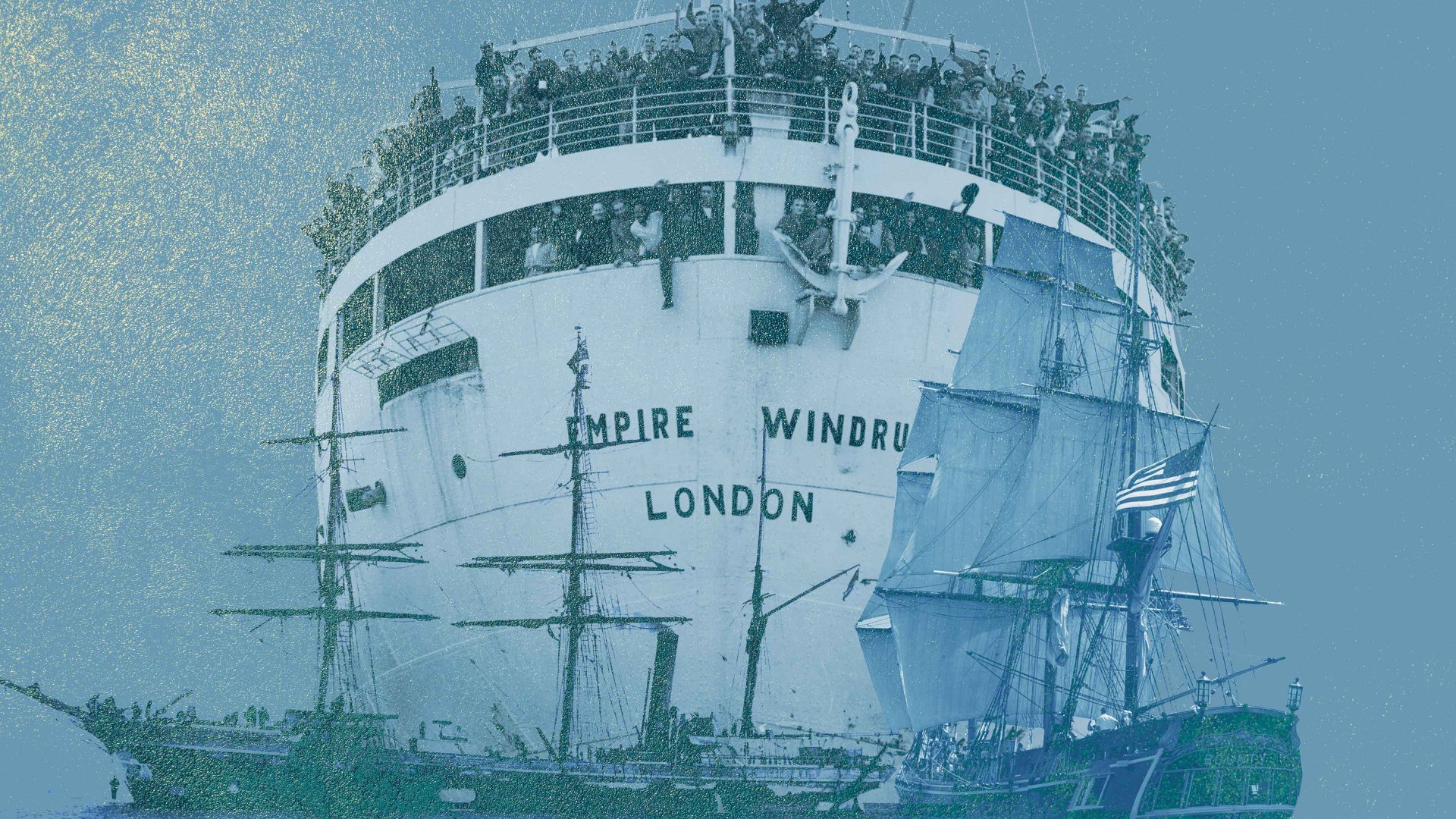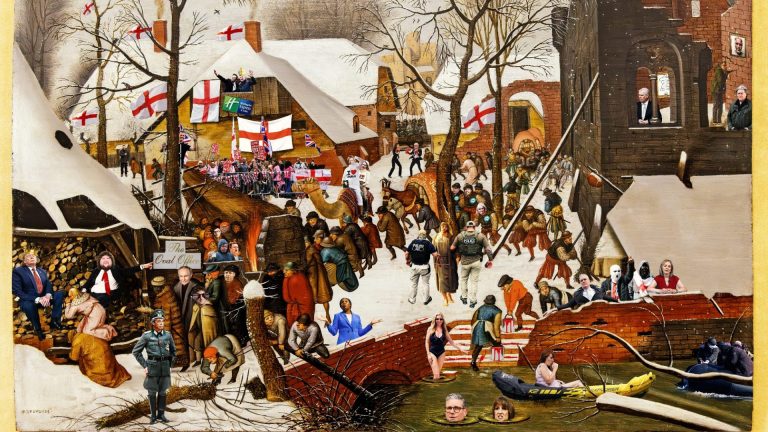If the history of the world can be told through objects, then ships offer some of the most vivid insights. Constructed to withstand the power of the oceans, that durability means they tend to last much longer than people realise, which increases their chances of passing through moments of historical significance – sometimes more than once. Here are seven examples of ships that have, in their different ways, made history.
1 The USS Phoenix
The American light cruiser USS Phoenix enjoyed a lucky second world war and suffered a disastrous post-war life.
On December 7, 1941 the Phoenix was at Pearl Harbour, when the Japanese air force attacked. On that day she happened to be moored away from the densest concentration of ships but was close enough to shoot down one attacking Japanese aircraft and to witness the sinking of the Arizona and the Oklahoma.
Over the next four years, the USS Phoenix earned eight battle stars and at the war’s end she sailed to Philadelphia to be decommissioned and to await her fate.
At around that time Juan Perón came to power in Buenos Aires. In 1951, he bought the USS Phoenix and rechristened her the 17 du Octubre, to commemorate the day on which Argentine workers rallied to demand his release from prison. In 1955 Perón was overthrown and went into exile. The ship was then re-named, in honour of a famous Argentine lawyer who had founded the nation’s naval academy and fought in the 1811 war of independence. His name was Manuel Belgrano, and the ship was now the General Belgrano.
When the Argentines invaded the Falklands in April 1982, the General Belgrano was assigned to a task force to intercept the British naval fleet.
Meanwhile, the Thatcher government announced a 200-mile exclusion zone around the islands. The British nuclear submarine HMS Conqueror sighted the Belgrano just outside the zone. Commander Chris Wreford-Brown sought permission to attack. Mrs Thatcher gave it. On 2 May the Belgrano was sunk.
The sinking of the Belgrano is steeped in controversy. Many claim that it was a war crime because the ship was outside the 200-mile exclusion zone. Perhaps the final word belongs to the ship’s commander, captain Hector Bonzo. “It was not a war crime,” he said. “It was an act of war, lamentably legal.”
2 The Great Eastern
Standing high above Liverpool’s Anfield Stadium is the last remnant of what was once the world’s largest and most luxurious ship ever launched: Isambard Kingdom Brunel’s Great Eastern.
It was an unlucky ship. It was Brunel’s last – and possibly his greatest – engineering feat. Seven hundred feet long and 18,915 tons, for decades she was the world’s largest vessel. Brunel designed the Great Eastern to carry 4,000 passengers to Australia, twice the capacity of the Titanic.
Unfortunately, the Great Eastern failed as a cruise liner, as she sailed from mishap to disaster. It was two and a half years before she could make her maiden voyage to New York and from day one she lost a fortune.
In 1864 the ship was sold and her ornate fittings torn out to accommodate 13,950 miles of undersea telegraph cables. The Great Eastern was transformed from a luxury liner into a cable ship working in the Atlantic, the English Channel, Mediterranean and Indian Ocean.
She was sold again in 1868 for £5,000 and descended into ignominy as a giant floating bill board for a Liverpool department store. She was finally broken up in 1888.
In 1891 Everton Football Club bought the Great Eastern’s top mast from a Wirral shipyard. It was placed at the top of the Kop End at Anfield Stadium at what became known as “Flagpole Corner”. In 1892 Liverpool Football Club was formed and inherited Anfield along with the last remnant of what was once the largest and most luxurious ship in the world.
3 The Terra Nova
The US Coast Guard knew nothing of the history of the Terra Nova when in September 1943 they sunk her off the coast of Greenland.
Knowing would have made no difference. She was sinking anyway and their wartime job was to ensure that the crippled 69-year-old ship did not become a navigation hazard. It was a sad end. After all, this was the ship that had carried Captain Robert Falcon Scott and his men to the Antarctic for their ill-fated race to the South Pole.
The Terra Nova was built to withstand Arctic conditions. Her hull was made of oak and greenheart, double-planked and reinforced with massive internal ribs. Scott was enamored with his ship. He described her as “a wonderfully fine ice ship… As she bumped the floes with mighty shocks, crushing and grinding away through some twisting and turning to avoid others, she seemed like a living thing fighting a great fight.”
The Terra Nova unloaded Scott and his four companions at McMurdo Sound. They never returned. In 1912 the ship returned home with the tragic but heroic news of Captain Scott and his men.
The Terra Nova resumed work in 1913 as an Arctic sealer, but in 1943 an iceberg holed her below the waterline off the coast of Greenland ansd by the time rescue ships arrived the main deck was below water. The crew was saved. The ship was sunk.
The ship’s bell is now at the Scott Polar Research Institute. Every day it is rung at 10:30 to announce the arrival of the tea trolley named the “Tea-a-nova.”
4 USS Constitution
The USS Constitution (aka “Old Ironsides”) is set to play a major role in next year’s celebrations to mark the 250th anniversary of American independence.
Over the centuries, the 238-year-old has become one of the enduring symbols of American independence, strength and continuity and is the oldest commissioned warship still afloat.
Launched in 1797, she was one of six frigates designed to protect US shipping and the Constitution’s baptism of fire came in the war with France from 1798 to 1800. But her greatest fame arrived during the war of 1812. In a series of duels against the Royal Navy, Constitution defeated HMS Guerriere, Java, and Cyane, earning the sobriquet “Old Ironsides” after enemy cannonballs were seen to bounce off her thick oak hull.
After the war, Constitution served as a flagship in the Mediterranean and Pacific suppressing piracy. By mid-century, she had become an ambassador of American power, circumnavigating the globe between 1844 and 1846.
During the Civil War Constitution retired from active service but remained a training ship and later a naval symbol of continuity. A public campaign in the 1920s saved her from scrapping, and careful restorations have since preserved her seaworthiness. She is manned by active-duty US Navy sailors, and sails under her own power.
On July 4, 2026, USS Constitution will lead a flotilla of tall ships as they process around Boston Harbour to mark the 250th anniversary of the signing of the Declaration of Independence.
5 HMS Bounty
HMS Bounty is actually two famous near-identical ships. The first was built in 1784 and rose to prominence in the South Pacific when its crew mutinied against the strict discipline of its captain, Lieutenant William Bligh.
In 1787 HMS Bounty sailed from Spithead for Tahiti. Its mission was to find and transport breadfruit plants from Tahiti to the Caribbean. The ship spent five months in Tahiti, during which the crew began to resent Bligh’s harsh methods.
Led by Fletcher Christian, the crew mutinied and set Bligh and 18 of his supporters adrift. Bligh’s 3,600 mile voyage to safety is one of the greatest feats in navigation history.
Meanwhile the mutineers split. Some settled in Tahiti and others sailed to Pitcairn Island where they burned the ship.
Though the original Bounty perished in flames, her legend grew and inspired three Hollywood films. The third, shot in 1962, involved the construction of HMS Bounty Mark Two, an exact replica.
Bounty Mark Two continued after the film as a training ship. In 2012 she was caught in Hurricane Sandy, ran aground and sunk off the coast of North Carolina at the cost of two lives.
6 SMS Goeben / TCG Yavuz Sultan Selim
Few warships can claim to be the pride and joy of two national navies. Germany’s SMS Goeben, also known as Turkey’s TCG Yavuz Sultan Selim is just such a ship.
Launched in 1911, the German battlecruiser Goeben represented the pinnacle of Kaiser Wilhelm’s prewar naval ambitions: fast, heavily armed, and intended to challenge Britain’s global dominance.
Assigned to the Mediterranean on the eve of the first world war, she was commanded by admiral Wilhelm Souchon, a man whose decisions would alter history.
When war erupted in August 1914, Goeben and the light cruiser Breslau were pursued by superior British forces but managed to elude them, steaming eastward to Constantinople. There, the ships were “transferred” to the Ottoman Navy to avoid internment, though their German crews remained aboard. Goeben was renamed Yavuz Sultan Selim, Breslau became Midilli. Their arrival decisively tilted the Ottoman Empire toward alliance with Germany.
In her new guise, Yavuz bombarded Russian ports in the Black Sea, provoking Russia’s declaration of war on Turkey and thus bringing the Ottoman Empire into the first world war. Throughout the conflict, she served as the flagship of the Ottoman fleet.
After the war, the Yavuz became the pride of the new Turkish Republic’s navy. Remarkably, she remained in commission through the 1930s, 1940s, and beyond, a living relic of the dreadnought era amid modern fleets. In the second world war, she served in a neutral navy but was maintained in readiness. Decommissioned in 1950, she was not scrapped until 1973, having served under two empires and one republic.
7 Calypso
Calypso began life as the humble British minesweeper La Coquette. Built by Ballard Marine in Seattle in 1942 and loaned to the Royal Navy, she served unremarkably during the second world war, sweeping for mines in the Mediterranean. In the immediate postwar years she was used as a ferry in Malta.
Her transformation came in 1950, when the Irish millionaire Thomas Loel Guinness leased her to a French naval officer turned explorer: Jacques-Yves Cousteau.
Under Cousteau’s vision, Calypso became a floating laboratory, refitted with a mobile diving chamber, wet and dry labs, underwater cameras, and the now-iconic yellow mini-submersibles. For nearly half a century she roamed the world’s oceans, from the Red Sea to the Antarctic, bringing the unseen depths into millions of sitting rooms through “The Undersea World of Jacques Cousteau”.
Her name became synonymous with exploration and marine conservation. Aboard her, Cousteau’s team pioneered scuba technology, developed new filming techniques, and conducted vital ecological research. Calypso wasn’t just a ship – she was an environmental pioneer, a vessel that helped inspire a global awakening to the fragility and wonder of the oceans.
In 1996, while docked in Singapore, she was struck by a barge and sank in shallow water. Raised soon after, she became the focus of a long and sometimes fraught restoration effort in France. Calypso is currently in a Turkish shipyard where workers are continuing to return her to her former glory.
8 Empire Windrush
The ship that gave its name to a generation of immigrants started life in Germany. Built in 1930, the MV Monte Rosa sailed between Germany and South America before being pressed into wartime service as a Nazi troop ship. Her experiences included the invasion of Norway.
In 1945 she was handed over to the British victors as part of war reparations. Continuing as a troop ship, the renamed HMTS (His Majesty’s Troop Ship) Empire Windrush was given the task of collecting British troops scattered around the empire.
In June 1948, Empire Windrush made her most famous journey. Stopping in Trinidad, Tampico (Mexico), Bermuda and Kingston, Jamaica, she picked up 492 Afro-Caribbean passengers bound for the UK. They had been told that the UK needed them because of a post-war labour shortage. The cost of the passage was £12 10s.
Being a former troop ship, the Empire Windrush offered cramped conditions, with bunk beds and shared washrooms. But as it sailed for 22 days across the Atlantic.
When she reached Tilbury Docks on 22 June (now memorialised as Windrush Day). The reception was mixed. Some welcomed the new workers. Others were worried about “coloured immigration.” Windrush passenger John Richards later said: “We thought we were coming home to Mother England – but she didn’t quite open her arms the way we expected.”
After her famous voyage, Empire Windrush returned to life as a troop ship. On 28 March 1954 a fire broke out off the coast of Algiers. She sank two days later.









